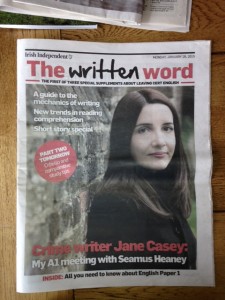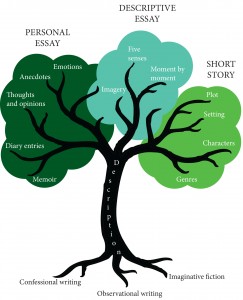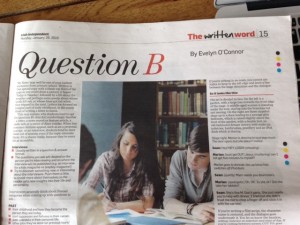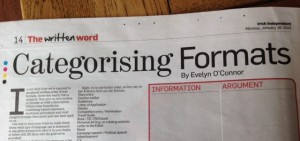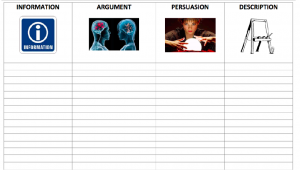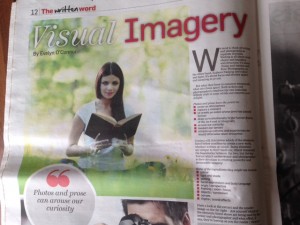This article first appeared in the Irish Independent Written Word Supplement on Monday 26th January 2015.
Meditating on Mindfulness
Hocus Pocus or Miracle Cure?
Susan Mullane
Close your eyes. Breathe in. Feel the oxygen flood your core, flow into your limbs and cleanse your mind. Focus your mind, slowly, on your feet… calves… thighs… abdomen… hands… arms… chest… shoulders… neck… head… face. Listen to the sounds in the room. Allow your thoughts to wander and as they appear, let them flow away. Focus on the now. You are, I am, we are. Body. Breadth. Sensation.
For some, buying into the promise of mindfulness seems like a Volkswagen camper van too far. It’s all a bit touchy-feely, hippy-dippy, thanks but no thanks, I’d rather have tea and a scone to relax. For others, it is the infiltration of mindfulness into the popular consciousness that they find unforgivable. If it had remained a minority pursuit, imported after one too many trips to Buddhist temples in Nepal, at least it would have retained some essence of its roots. But, critics argue, divorcing mindfulness from the quest for a moral life makes it an exercise in accepting the status quo, something that plays into the hands of the very forces, mostly corporate, who have popularised it for their own machiavellian purposes. Reducing stress via ten minutes of mindfulness a day boosts your employees productivity and that’s a hell of a lot cheaper than hiring extra staff! McMindfulness indeed!
But if mindfulness has made self-help gurus rich, as they pump out books promoting their expensive residential courses, does that in and of itself negate the benefits of a craze that has penetrated so deeply into our communities, reaching into schools, prisons and nursing homes? For me, the logic here is absurd. Just because something is popular, does not make it worthless. Just because it’s been adapted from its original form does not make it toxic. It may have made men rich, but perhaps that’s because it works.
I spoke to Karen Miles, a staunch advocate of mindfulness and founder of popular website meinmind.ie. “I’ve seen it transform my own life” she enthuses “and that’s why I set up the website. I wanted others to experience the same joy, but I realised that first they’d have to believe it’s worth bothering with”. Trawling her site, facebook page and twitter account, the proliferation of testimonials could well make a believer out of this agnostic. Rather than grandiose claims, simple messages dominate. “I am so glad I did this. It was hard to keep it going by myself at first, but now I practice mindfulness everyday and I find I get a lot less stressed about the small stuff” says Annette, 35 in Louth. “Feeling calm. Have been following the tips on your site for four months and I don’t know myself. Thanks Karen” comments Jennifer on the facebook page. “@seanlala Thanks @meinmind Your site helped me to get through the stress of my exams” tweets Sean, 17. There’s plenty more in this vein, expressing simple gratitude for a coping mechanism that seems to genuinely reduce stress and anxiety in those who need it most.
Nor is mindfulness a new concept, despite what the cynics would have us believe. The earliest reference to myndfulness dates back to 1530 as a translation of the French word pensée. Indeed, Pascal’s book of the same name contains ideas which echo the core message of simply being that still resonates so powerfully with people today. “All of humanity’s problems stem from man’s inability to sit quietly in a room alone” he maintains. Perhaps the enduring appeal of every approach that embraces the now, from yoga to pilates; and from meditation to massage, is that it allows us to forget our anxieties, our worries, our fears and to enter into that state of flow which allows us to unconsciously feel at one with the universe.
If all of that feels a little saccharine, perhaps now is an opportune moment to turn to science for some truth. Does it work? Or are we just wasting our time, handing over our hard earned cash to men in expensive suits who simply re-package the wisdom of the ancients for our modern secular age?
Whatever the original source, research by the US Agency for Healthcare Research and Quality concluded in 2014 that mindfulness does indeed have an effect. Following a mindfulness programme reduces many of the most toxic elements of stress, including anxiety and depression. Of course there’s a warning about the limitations of its effect. There’s no evidence that it alters your eating habits, helps you lose weight or sleep better, they add. It’s not better than exercise or behavioural therapies. To which I reply, who cares? Singing daily doesn’t make me better at playing the piano but that does not negate the joy of singing in my life. If I can find something that I can work into my daily practice and build into my life, that makes me less anxious, less stressed and less likely to become depressed, then hallelujah, bring it on.
If you can afford behavioural therapies, by all means do that too. Eating healthily and getting exercise remain the cornerstones of a healthy life, but this isn’t an either or scenario. ‘Everything that helps, helps‘ my mother used to say and she was a woman full of wisdom. In my teens, as I was prowling the house one day, stressed about my impending mock exams, she suddenly went to the press, hauled out a stack of plates from the very back and said ‘would you ever go and smash those. It might calm you down’. She also handed me a plastic bag and a dustpan and brush so I could tidy up after myself. I will never forget the liberating joy of willful destruction I experienced that day. I was aware of my body, aware of my surroundings, caught up in the present moment and relieved entirely of my despair. It didn’t last forever, but I got a few days grace from the experience, the memory of which carried me through many future moments with a smile.
Remember, also, that a societal focus on positive mental health is a wonderful development for a country whose wellbeing has been severely challenged by years of austerity, high unemployment and emigration. Embracing mindfulness is not a pretence that all is fine; rather it reflects an awareness that when all is not fine we need to build our resilience; to learn strategies that help us to cope. As we emerge into better, more hopeful times, retaining our hard earned wisdom to stay connected to that which matters should stand us in good stead in the future, provided me remember to focus on the now.
And how does it work?
Close your eyes. Breathe in. Feel the oxygen flood your core, flow into your limbs and cleanse your mind. Focus your mind, slowly, on your feet… calves… thighs… abdomen… hands… arms… chest… shoulders… neck… head… face. Listen to the sounds in the room. Allow your thoughts to wander and as they appear, let them flow away. Focus on the now. You are, I am, we are. Body. Breadth. Sensation.
—
Writing a feature article: here is the process I went through to create this piece.
Preparation
- Choose a topic
- Brainstorm ideas
- Decide a basic paragraph plan & sequence for your ideas.
Writing – a step by step guide
HEADLINE + SUB-HEADING
BYLINE (journalist’s name)
INTRODUCE AN IDEA = try to grab the readers’ attention from the get go.
PARAGRAPH 2 = outline the ‘things people say’ about this topic
PARAGRAPH 3 = make your own stance clear
PARAGRAPH 4 = testimonials from people you’ve interviewed
PARAGRAPH 5 = look at the history of this topic or issue
PARAGRAPH 6 = ask some pointed questions
PARAGRAPH 6 = establish what our current understanding is
PARAGRAPH 7 = personal anecdote(s)
PARAGRAPH 8 = Irish context and potential impact on our society going forward
CONCLUSION = come full circle by returning to the original idea from the start of the article
REMEMBER: an article will likely include facts & statistics, rhetorical questions, contrast, anecdotes, quotes from interviewees etc…

